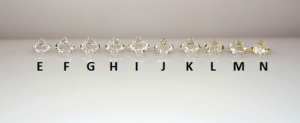LorealJohn
Rough_Rock
- Joined
- Aug 11, 2016
- Messages
- 1
Hey,
Isn't it safe to have 6 prongs diamonds than 4 prongs diamonds? Which type of diamond setting would you choose? I felt, in favor of security, 6 prongs diamonds are better. I have seen from an article http://www.pheradiamonds.com/four-prongs-vs-six-prongs/ 4 prongs diamonds has more luster and sparkling as it has more area to reflect light. Then how about 6 prongs diamond? How do you choose a diamond? Based on its luster or security?
Isn't it safe to have 6 prongs diamonds than 4 prongs diamonds? Which type of diamond setting would you choose? I felt, in favor of security, 6 prongs diamonds are better. I have seen from an article http://www.pheradiamonds.com/four-prongs-vs-six-prongs/ 4 prongs diamonds has more luster and sparkling as it has more area to reflect light. Then how about 6 prongs diamond? How do you choose a diamond? Based on its luster or security?








300x240.png)